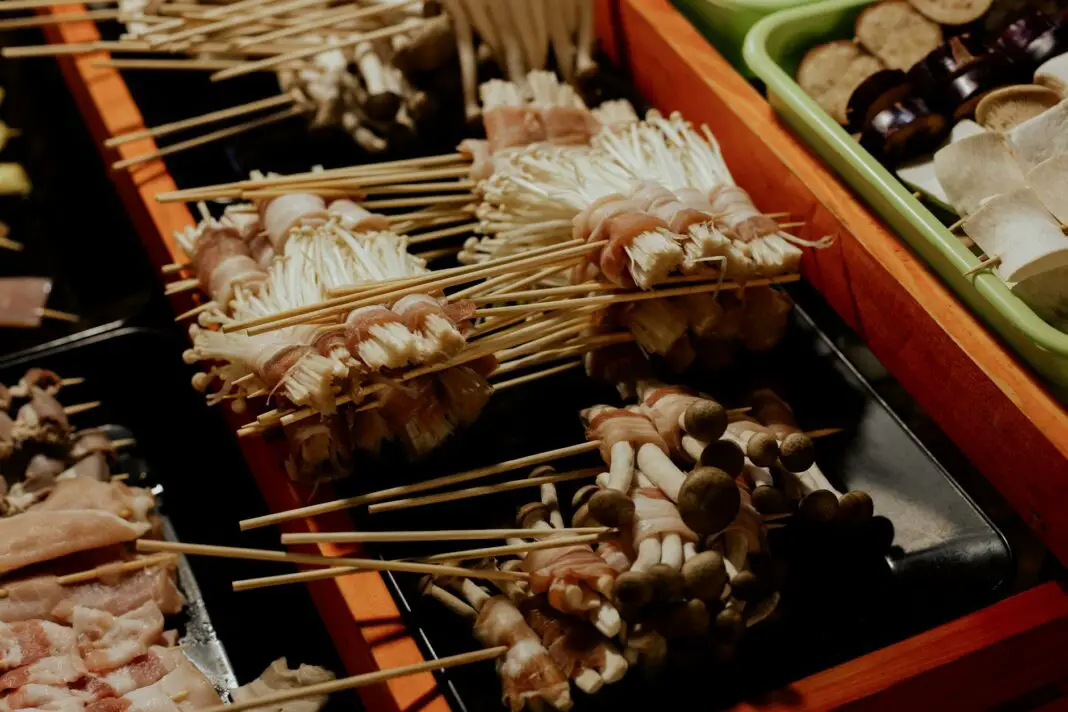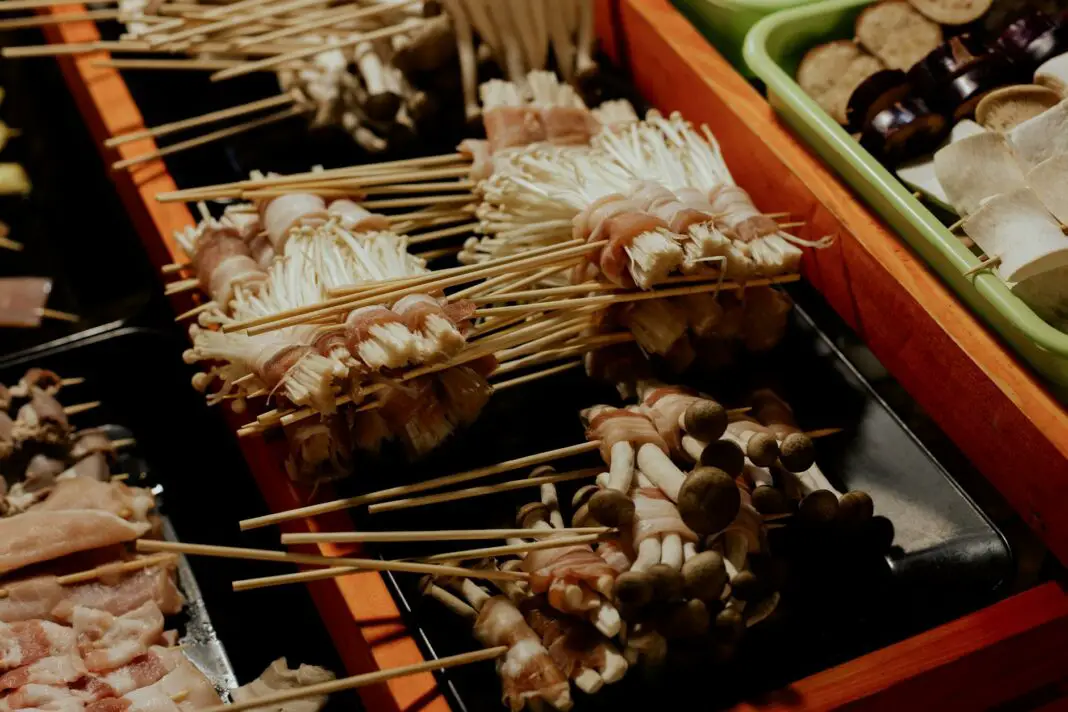Embarking on a trip to Thailand offers more than just breathtaking landscapes and rich culture; it opens up a world of tantalizing cuisine and unique local ingredients that can transform any culinary experience. From vibrant street food stalls to upscale dining establishments, experiencing the flavors of Thailand is a journey in itself. This post will explore which local Thai ingredients will elevate your culinary adventure, taking you beyond the ordinary and into a realm of exquisite tastes and aromas.
As you dive deeper into the essence of Thai cooking, understanding the key ingredients is crucial. They not only enhance the dishes but also tell the story of the region’s agricultural richness and culinary traditions. In this guide, we will examine fundamental Thai staples and show you how they can elevate your cooking at home, ensuring that your culinary journey remains memorable and delicious long after you leave Thailand.
Table of Contents
- Thai Basil
- Kaffir Lime Leaves
- Fish Sauce
- Chilies
- Coconut Milk
- Galangal
- Your Expert Culinary Journey Awaits
Thai Basil
One of the cornerstones of Thai cuisine, Thai basil is not just any herb; it offers a distinct flavor profile that sets it apart from its Mediterranean counterparts. With a peppery bite combined with a sweet, anise-like aroma, this ingredient is pivotal in dishes such as Pad Krapow Moo or Thai basil stir-fried chicken. The leaves of the Thai basil plant are deep green and glossy, with purple stems, and can be easily found in local markets. When used fresh, it not only adds flavor but elevates the visual appeal of any dish, bringing a splash of color and freshness that is irresistible during those hot Thai evenings.
Including Thai basil in your culinary repertoire can exponentially enhance your home-cooked meals. It pairs beautifully with proteins like chicken, pork, and seafood, and it enriches vegetable dishes by adding depth and complexity. Try adding Thai basil to salads or as a garnish on soups; its aromatic profile will create a delightful balance of flavors that embodies the essence of Thai cooking.
Kaffir Lime Leaves
Kaffir lime leaves are another remarkable ingredient frequently overlooked by home cooks. The leaves, which are glossy and vibrant green, have a unique double leaf structure that releases a fresh citrus fragrance. They are essential for adding complexity and brightness to various soups, curries, and sauces, and they serve as the aromatic backbone in the traditional Tom Yum soup. This product encapsulates the essence of Thai flavors, offering a zesty note that can invigorate even the simplest of dishes.
Using kaffir lime leaves can transport your dishes directly to a bustling Thai market filled with authentic smells and flavors. Simply tear or bruise the leaves to release their essential oils, allowing their aroma to weave through your cooking. Incorporating this ingredient into your meals will undoubtedly impress friends and family who cherish fresh, bold flavors—it’s the little details that truly make gourmet cuisine shine.
Fish Sauce
Often considered the heart and soul of Thai cooking, fish sauce is a pungent, salty condiment that adds umami depth to dishes. This staple, made from fermented fish, brings layers of flavor beyond just saltiness and is crucial for achieving that authentic taste. Dishes like Pad Thai or Green Curry are practically incomplete without this ingredient, as it harmonizes the flavors so perfectly. While it may seem intimidating at first, mastering the use of fish sauce can elevate your culinary skills remarkably.
A little goes a long way, so start with small amounts and taste as you go. You can even explore substitutions or variations, such as adding soy sauce or tamari for a different twist if you have dietary restrictions. However, to fully embrace your culinary adventure, using fish sauce in its original form offers an experience that is unrivaled, bringing you directly into the heart of Thai kitchens.
Chilies
No exploration of Thai cuisine would be complete without discussing chilies. These vibrant, spicy peppers come in various shapes, sizes, and heat levels, each with its flavor characteristics. Thai cuisine celebrates the balance between heat and flavor, so understanding how to use chilies effectively is paramount. Whether you prefer bird’s eye chilies for an intense kick or milder long green chilies, these ingredients can uplift any meal and cater to different palates.
One of the most delightful experiences when preparing Thai dishes is adjusting the spiciness level to your liking. For those who enjoy heat, incorporating fresh or dried chilies will add a fire and vibrancy to your meal. Alternatively, if you wish to tone it down, consider using the seeds or simply infusing the oil with chilies before adding other ingredients. This spice adaptability makes chilies an essential ingredient in enhancing any culinary adventure, allowing everyone to savor the diverse spectrum of Thai flavors.
Coconut Milk
Coconut milk is a creamy, rich ingredient that serves as a cornerstone in both savory and sweet Thai dishes. It provides a luscious texture to curries and soups while balancing the heat from spices or chilies with its natural sweetness. This ingredient not only contributes to flavor but also emulates the tropical essence of Thailand itself. Undoubtedly, it plays a crucial role in creating that aromatic allure synonymous with Thai cuisine.
Using coconut milk can also inspire a range of recipes beyond traditional dishes. Consider experimenting with desserts like coconut sticky rice or employing it in cocktails to create exotic refreshments. Its versatility means you can explore various culinary paths, enhancing your dishes whether savory or sweet. When you properly incorporate coconut milk into your cooking, it will deliver a richness that all your guests will love, making every meal an unforgettable treat.
Galangal
Galangal, often confused with ginger, is an essential root in Thai cooking that deserves recognition. With its sharp, floral, and slightly citrusy flavor, this ingredient adds an intriguing twist to standard dishes. It acts as a crucial component in aromatic pastes, curries, and soups. This unique root captures the warmth of Thailand’s culinary history and elevates the dining experience, engaging all of your senses. Galangal can be used fresh, dried, or ground, providing options for chefs looking to experiment.
When preparing traditional dishes like Tom Kha Gai, the authentic taste of galangal is irreplaceable. To maximize its flavor potential, consider bruising the root before incorporating it into your hot dishes, as this releases its essential oils. While it might not be a household name worldwide, introducing galangal into your cooking repertoire allows you to explore the intricate flavors of Thai cuisine and impress diners with its distinctive taste.
Your Expert Culinary Journey Awaits
Traveling to Thailand is not just about stunning vistas and vibrant culture; it offers an escape into a kingdom of flavors that can redefine your cooking at home. By incorporating local ingredients such as Thai basil, kaffir lime leaves, fish sauce, chilies, coconut milk, and galangal into your culinary experience, you elevate your dishes, encouraging creativity and exploration. No longer do you need to be a professional chef to embrace authentic Thai cooking—these transformative ingredients empower anyone willing to experiment in the kitchen.
As you gather these staples or seek them out at local markets, remember that the culinary adventure goes beyond mere cooking. It invites you to engage with the rich history, cultural significance, and traditions of Thailand, creating not just meals but experiences. With the right ingredients, every dish can become a celebration of flavors that transports you to the vibrant streets of Bangkok and beyond.
Frequently Asked Questions
- What are some must-try Thai dishes that feature these ingredients? Dishes like Pad Thai, Tom Yum soup, and Green Curry highlight the delicious impact of these essential ingredients.
- Where can I find authentic Thai ingredients? Most local Asian grocery stores or specialty markets have these ingredients readily available. Online options are also abundant for hard-to-find items.
- Are there substitutes for these ingredients? While some substitutions can be made, using the authentic ingredient is recommended for the best flavor. For instance, soy sauce can substitute fish sauce, but the flavor will differ.
- How can I incorporate these ingredients into my everyday cooking? Start by adding small amounts to familiar dishes, gradually increasing the quantity until you find the right balance that suits your taste.
- Can these ingredients be used in non-Thai dishes? Absolutely! Many of these ingredients, like coconut milk and chilies, can enhance a variety of cuisines, adding a delightful twist to any recipe.
Image Credit: Pexels





